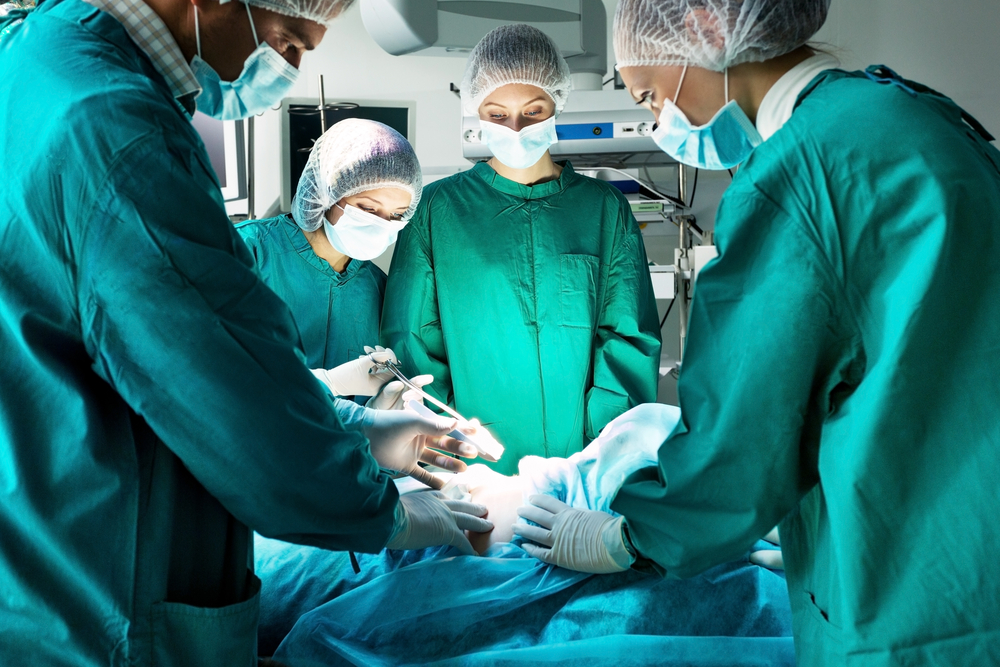Transsphenoidal Surgery Is Safe and Effective Treatment for Cushing’s Disease, Study Shows
Written by |

Kotin/Shutterstock
Transsphenoidal surgery, a minimally invasive surgery to remove tumors in the pituitary gland, is safe and effective to treat Cushing’s disease, a 20-year history of cases in a Belgian hospital shows.
The surgery resulted in high remission rates (83%) in patients. It was also found to be safe, rarely leading to insufficient functioning of the pituitary gland.
The study, “Outcome of transsphenoidal surgery for Cushing’s Disease: a single-center experience over 20 years,” was published in the journal World Neurosurgery.
Surgical removal of tumors in the pituitary gland of the brain remains the gold standard for Cushing’s disease treatment.
Transsphenoidal surgery (TSS) usually leads to good remission rates ranging from 68-95%, depending on the location and type of tumor, the neurosurgeon’s expertise, follow-up period, and the definition of remission.
Today, TSS consists of surgery directed through the nose to get to the bottom of the skull, where the pituitary gland is located. The tumor is reached via the nasal cavity with no need for incisions on the face.
To address the safety and effectiveness of this type of surgery for treating Cushing’s, researchers retrospectively reviewed the outcome of 71 patients who received their first TSS at Saint-Luc Hospital, Belgium, between 1996 and 2017. Patients were followed for an average of 6.8 years (82 months).
Surgeons used a type of TSS that is image-guided with the help of a microscope which magnifies the surgeon’s vision.
Remission was defined as normal fasting cortisol level, normal 24-hour urinary-free cortisol, or prolonged need for hydrocortisone replacement for one year after surgery.
Replacement therapies are sometimes needed when the pituitary is not producing enough cortisol after surgery.
Patients were mostly women, ages 15 to 84. Some of them, 32%, required multiple surgeries.
In total, 46 patients out of 71 were in remission after the first surgery, 11 after the second surgery, one after the third, and one after the fourth intervention.
A successful first surgery, resulting in a one-year remission, was a positive indicator for patients, as it was associated with high final remission rates (95%).
However, if the first surgery failed, only 36% of patients achieved a final remission.
“Obtaining a lasting remission after a first TSS could be an interesting parameter to influence future therapeutic decisions [like] performing repeated surgery rather than choosing second-line therapies,” researchers wrote.
Overall, remission was achieved in 83% of patients who underwent a single or multiple TSS intervention, a recurrence rate comparable to previous reports.
Surgery was particularly successful for curing patients with macroadenomas — tumors larger than 10 mm — leading to a 92% remission rate.
Small tumors that were not visible on magnetic resonance imaging (MRI) scans were more difficult to treat, with only 71% of patients being cured. Still, such a remission rate was better than what is commonly reported for MRI-negative tumors. This is likely explained by a higher level of expertise by the surgeon.
Levels of cortisol one day after TSS were significantly lower in patients with long-term remission. However, high levels were still observed in a few patients, especially those who had Cushing’s disease for many years.
“Therefore, high cortisol levels in the postoperative early days do not always indicate persistent disease and later [cortisol] evaluation is warranted,” the researchers wrote.
Most complications from surgery were minor and transient, except for seven patients who developed diabetes. Only 8.8% of patients developed long-term failure of the pituitary gland, likely because physicians favored a less aggressive intervention plan to leave the pituitary gland as intact as possible.
However, such an approach may also explain why some patients had to undergo multiple surgeries to completely remove the tumor.
In addition, a longer duration of Cushing’s disease symptoms and higher cortisol levels before surgery could significantly predict a poorer likelihood of being cured by TSS.
“Neuronavigation-guided microscopic TSS is a safe and effective primary treatment for [Cushing’s disease], allowing high remission rates,” the researchers wrote.





